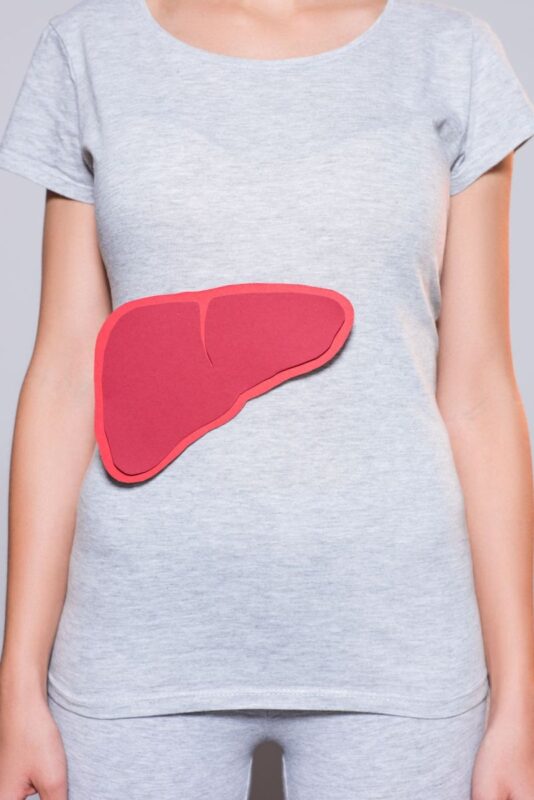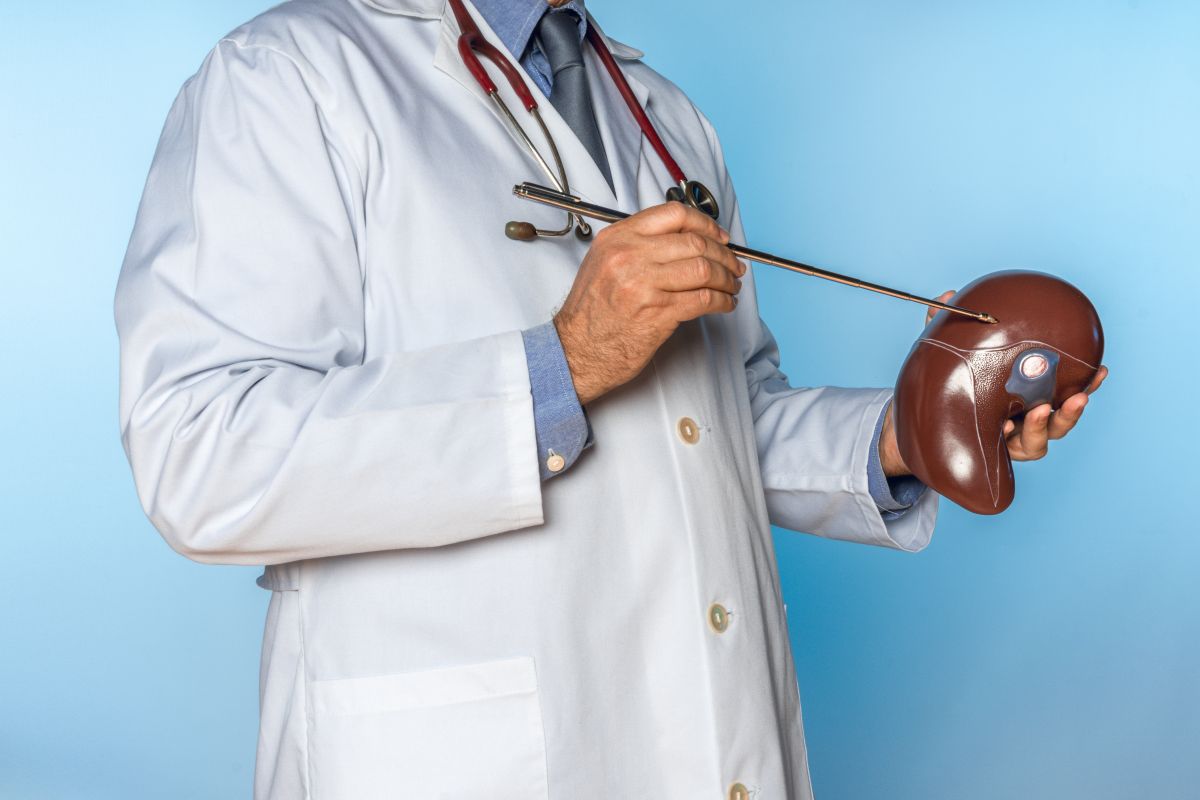Fatty liver is a condition that is estimated to affect about 30% of adults in the US, according to the American Liver Foundation. But since most of these people don’t even know they have it, one might wonder: is fatty liver a serious condition? Is it life-threatening?
While fatty liver isn’t life-threatening for many people diagnosed with it, there is always the risk of it progressing into a more serious condition (such as cirrhosis of the liver or worse), which could put one’s life in danger.
Since there is no real way of knowing how will NAFLD aka fatty liver progress in your case, it’s always best to play it safe and reverse your condition. It is relatively easy to be done, with lifestyle changes and eating healthier food.
And even though this condition is the most common chronic liver condition in the US (and I would guess the world too), it doesn’t mean it should be ignored. Or left untreated.

The problem is that because hepatic steatosis is not usually life-threatening, many doctors downplay it and won’t encourage patients to reverse it.
In my case, when I was diagnosed with a fatty liver, my doctor told me it can’t be reversed.
Fortunately, I proved her wrong by reversing it… but it just goes to show that some doctors can really downplay what can be (even if for just a small percentage) a dangerous condition.
What is Fatty Liver?

Fatty liver means you have excess fat stored in the liver. That equates to more than 5% of fat formation that may cause inflammation and liver cirrhosis.
The liver is the second largest organ in our body. It is essential for thousands of functions including storage, detoxification, and synthesis.
A build-up of excess fat in this organ causes fatty liver disease that may lead to serious liver damage in the long run.
Fatty liver disease has two main types: Alcoholic fatty liver disease (AFLD) and Non-alcoholic fatty liver disease (NAFLD). In AFLD, as its name suggests, the scarring and inflammation of the liver are due to heavy alcohol use.
NAFLD, on the other hand, is a result of abnormal metabolism and extra calories and fat absorbed from food. This is the most common form of fatty liver.
What is NAFLD?

NAFLD or fatty liver (as I will address it in this blog) is a term for different conditions caused by the build-up of fat in the liver.
It doesn’t usually cause harm but later on, if left unmanaged, it can progress and leads to permanent liver damage.
Fatty liver is graded (grade I, II, III) depending on the severity of the extra fat build-up. You can learn more about that in my article here.
NAFLD is serious but it is preventable and can be reversed. I have done it and thousands of others managed to do it as well. You only have to stick to a proper diet and exercise to reverse it.
How Serious Is Fatty Liver?
Fatty liver is tagged as a silent disease because in its early stages, it often has no symptoms. Even blood test results can come back normal, so the only sure way to know if you have it or not is to perform an ultrasound.

That’s why most people either don’t know they have it or just think it’s not something that can seriously impact their lives.
Even some doctors don’t make a big deal out of it and think it’s just something one should live with. (As it was my case and I’m not a singular one, unfortunately).
But in reality, it’s not something you can just shrug off. If left unmanaged, fatty liver can lead to serious and life-threatening conditions such as liver cirrhosis and even liver cancer.
Fatty liver disease develops when there’s too much fat surrounding the liver. These excess fats serve as a toxin to liver cells that eventually causes scarring and inflammation, a condition known as Non-alcoholic steatohepatitis (NASH).
In worst cases, it can cause your liver cells to die which increases your risk for liver failure and the need for a liver transplant.
NAFLD and NASH are expected to be the most common reason for liver transplants in the US. So it’s definitely not something to take lightly!
As I’ve mentioned above, NAFLD patients can still live for many years, but it can become life-threatening if left untreated.
A study by Wing-Kin Syn, MD, Ph.D. from the Medical University of South Carolina states that 30% of NAFLD patients progress to NASH.
And about 20% of these patients will develop end-stage cirrhosis, which is considered permanent and irreversible. I did hear from people who claim that they managed to reverse it – but it’s best not to get there, as if that is indeed possible, it will be a lot more difficult than reversing fatty liver.
Is Fatty Liver Curable?
When I was diagnosed with a fatty liver at the age of 30, young, and at the prime of my life, I was devastated. I was thinking I’m going to die and I’m not going to see my son grow up.
If you’re an avid follower of this blog, I’ve mentioned quite a few times that there is no medicine (that is FDA-approved) for fatty liver.
But the good news is it is easily reversible and curable with a particular lifestyle and dietary changes.

Throw away the alcohol in the cupboard, lose weight (in a good way) so start exercising and plan a healthy meal.
Through research and doctor recommendations, I found hope and decided to completely change my lifestyle.
I wanted a second chance in living a normal life together with my family. You can check out the story of how I reversed my fatty liver here.
Don’t lose hope, I did it and so can you!
Other than lifestyle modification, doctors would often recommend supplements such as milk thistle, vitamins, and others… but a proper diet and exercising are still the most important part of the process.
Conclusion
Fatty liver is a serious condition but it is curable and can be reversed (at least in its first three grades).
Don’t take your symptoms for granted because if it progresses to cirrhosis, it is already harder to manage and is life-threatening.
It’s better to have your fatty liver condition detected in the early stages than risk having it advance to liver failure.
If you or your loved one has fatty liver disease, this is your sign to make a 180-degree turn in your life. Follow a healthy lifestyle: exercise, eat a balanced diet, and avoid foods and other stuff that can worsen your fatty liver.
I managed to reverse my fatty liver (after one year and a half) and so will you.

I was diagnosed with a fatty liver back in 2014 and managed to reverse it by mid-2015. Since then, I’ve been studying it, continuously updating my knowledge with the latest scientific findings and practical approaches to give others the help they need to reverse their condition.
My approach to managing fatty liver is holistic, balancing scientifically-backed information with real-life, practical advice based on personal, direct experience.
I am also the admin of the Fatty Liver Support Group on Facebook and the Fatty Liver Subreddit.

